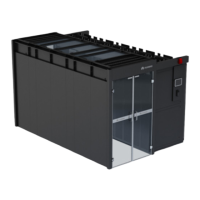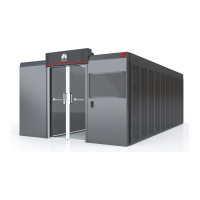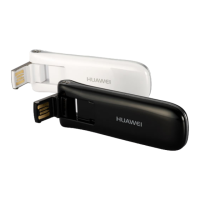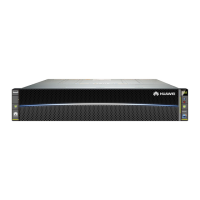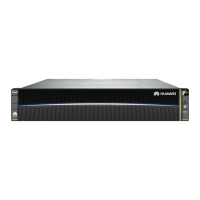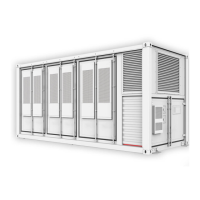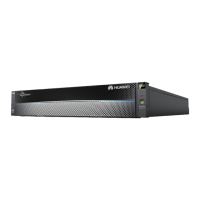● If batteries are left unused for a long period of time, store and recharge them
according to the battery requirements.
● Do not charge or discharge batteries by using a device that does not comply
with local laws and regulations.
● Keep the battery loop disconnected during installation and maintenance.
● Monitor damaged batteries during storage for signs of smoke,
ame,
electrolyte leakage, or heat.
● If a battery is faulty, its surface temperature may be high. Do not touch the
battery to avoid scalds.
Short-Circuit Protection
● When installing and maintaining batteries, wrap the exposed cable terminals
on the batteries with insulation tape.
● Avoid foreign objects (such as conductive objects, screws, and liquids) from
entering a battery, as this may cause short circuits.
Leakage Handling
Electrolyte overow may damage the equipment. It will corrode metal parts and
boards, and ultimately damage the boards.
Electrolyte is corrosive and can cause irritation and chemical burns. Should you
come into direct contact with the battery electrolyte, do as follows:
● Inhalation: Evacuate from contaminated areas, get fresh air immediately, and
seek immediate medical attention.
● Eye contact: Immediately wash your eyes with water for at least 15 minutes,
do not rub your eyes, and seek immediate medical attention.
● Skin contact: Wash the
aected areas immediately with soap and water and
seek immediate medical attention.
● Intake: Seek immediate medical attention.
Battery Room Fire Safety
The re safety of the battery room must comply with local laws and regulations
as well as applicable standards such as NFPA 855-2020, NEN-1010, or GB 50016,
and meet the following requirements:
● The battery room must not be located in environments where explosive gases
may exist or be released.
● The battery room must not be located near or under areas with water
leakage risks, such as water reservoirs, water landscapes, and water towers.
● It is recommended that an independent battery room be used. If the total
battery capacity exceeds 600 kWh (for example, more than seven cabinets
each with a battery capacity of 80 kWh are deployed), an independent
battery room must be used.
FusionDC1000A Prefabricated All-in-One Data
Center
Commissioning Guide (IT Scenario) 1 Safety Information
Issue 02 (2022-12-15) Copyright © Huawei Digital Power Technologies Co., Ltd. 22

